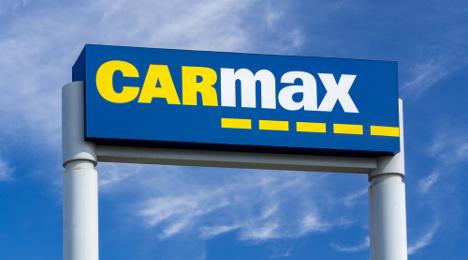CarMax annual retail sales rise 8.3%

Photo by Ken Wolter/Shutterstock.com
CarMax closed its fiscal year by reporting on Thursday that its total unit sales climbed 13.4 percent during the fourth quarter and 8.3 percent for the 12-month span.
According to its latest financial statement, CarMax retailed 176,017 units in Q4 and 671,294 units during the fiscal year that concluded on Feb. 28. Within the wholesale side of its business, CarMax’s auction division sold 91,143 units during the fourth quarter and 391,686 units in the fiscal year, representing year-over-year dips of 1.2 percent and 0.7 percent respectively.
And in its segment that buys vehicle installment contracts, the company reported that CarMax Auto Finance (CAF) income declined 10.2 percent to $82.9 million in the fourth quarter. For the fiscal year, CAF income softened by 5.9 percent to $369.0 million.
All told, CarMax reported that its net sales and operating revenues increased 9.3 percent to $4.05 billion in the fourth quarter. For the fiscal year, the company tabulated that its net sales and operating revenues increased 4.8 percent to $15.88 billion.
In the fourth quarter, CarMax said its net earnings increased 8.2 percent to $152.6 million and net earnings per diluted share rose 14.1 percent to $0.81. The company explained year-over-year comparisons were affected by a previously disclosed impairment-related charge of $5.2 million, net of tax, or $0.03 per diluted share, which reduced the prior year’s fourth quarter results.
For the fiscal year, the company added its net earnings increased 0.6 percent to $627.0 million and net earnings per diluted share rose 7.6 percent to $3.26.
More details about Q4 performance
While CarMax noted that its total used-vehicle unit sales grew 13.4 percent in Q4, the company also pointed out that its comparable-store sales rose 8.7 percent year-over-year.
“The comparable-store sales performance resulted from a strong increase in conversion, together with a modest increase in store traffic,” the company said.
For the non-Tier 3 customer base — what CarMax considers to be its prime credit buyer segment — comparable store used unit sales rose 15.3 percent.
“We continued to experience a headwind related to our third-party Tier 3 sales mix,” the company said about this segment that declined to 9.4 percent of used unit sales from 14.5 percent in the prior year’s fourth quarter.
“Tier 3 sales represent those financed by our third-party finance providers to whom we pay a fee,” CarMax continued.
“Credit tightening by our third-party Tier 3 finance providers earlier this year, a continued reduction in credit application volume from customers at the lower end of the credit spectrum and a delay in payments of federal income tax refunds in February, all contributed to the decline in Tier 3 mix,” CarMax went on to say.
Touching on its wholesale activities, CarMax explained why Q4 unit sales softened by 1.2 percent year-over-year.
The company said the performance reflected, “Contributions from the growth in our store base and an improved appraisal buy rate were more than offset by a reduction in appraisal traffic. In particular, age 7- to 9-year old wholesale vehicles continued to be in shorter supply.”
CarMax also shared its gross profit per unit figures for both its retail and wholesale operations.
On the retail side, the Q4 figure stayed “largely consistent,” according to CarMax, at $2,134 per unit versus $2,109 per unit in the prior-year period.
On the wholesale side, the per-unit figure dropped by 7.8 percent year-over-year during the fourth quarter, settling at $938 compared to $1,005 a year ago.
Finally over at CarMax Auto Finance, officials attributed 10.2 percent income decline primarily stemmed from a $15.4 million increase in the provision for loan losses, “which resulted from both higher loss experience in recent quarters and the growth in managed receivables, as well as an update in our assumptions for determining the loan loss allowance.”
CarMax Auto Finance indicated its average managed receivables grew 11.5 percent to $10.54 billion. The total interest margin, which reflects the spread between interest and fees charged to consumers and its funding costs, declined to 5.7 percent of average managed receivables from 5.9 percent in last year’s fourth quarter.
The company also mentioned the allowance for loan losses as a percentage of ending managed receivables was 1.16 percent as of Feb. 28, compared with 0.99 percent as of Feb. 29, 2016 and 1.10 percent as of Nov. 30 of last year.

 View The Latest Edition
View The Latest Edition

